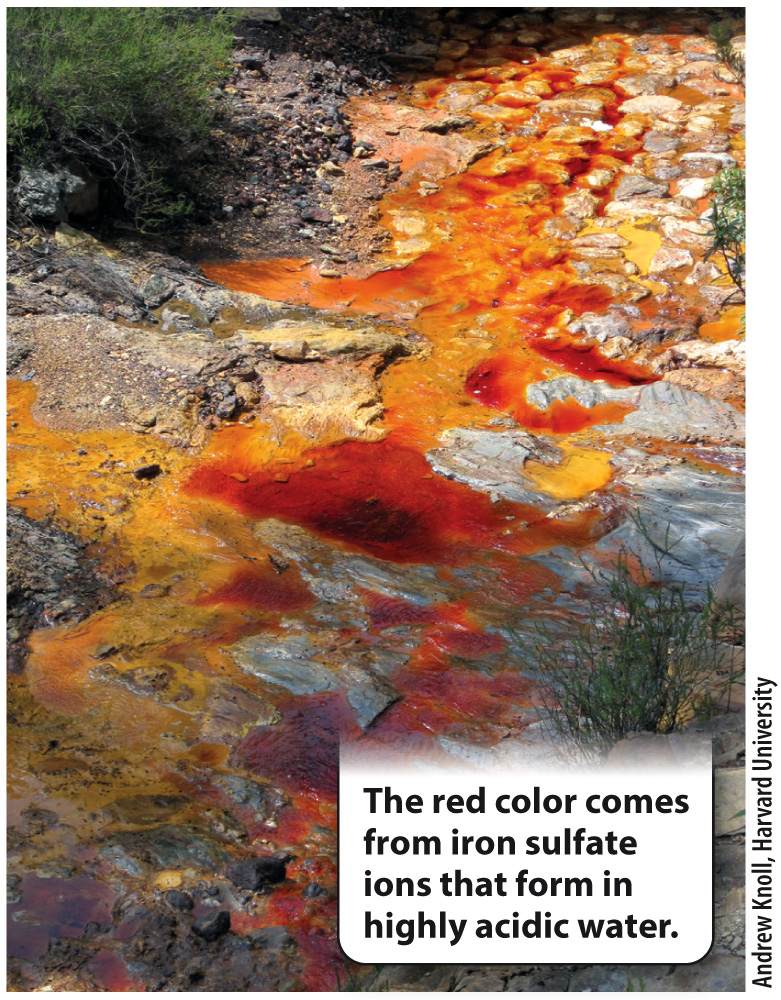The Archaea include several groups of acid-loving microorganisms.

In many parts of the globe where humans mine coal or metal ores, abandoned mines fill up with very acidic water. Called acid mine drainage, this water has been acidified through the oxidation of pyrite (FeS2) and other sulfide minerals to produce sulfuric acid (H2SO4). The pH of these waters is commonly about 1 to 2, and can actually fall below 0. To us, acid mine drainage is an environmental catastrophe, but a number of archaeons thrive in it (Fig. 26.18). Modified protein and membrane structures enable them to tolerate their harsh surroundings, making it possible to use sulfur compounds in the environment for both chemoautotrophic and heterotrophic growth. What is the limit to growth at low pH? Picrophilus torridus, a euryarchaeote archaeon, grows optimally at 60°C and in environments with a pH of 0.7—